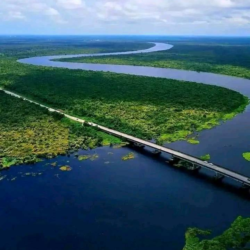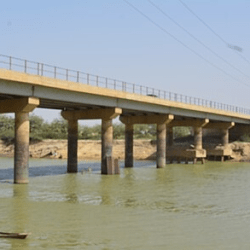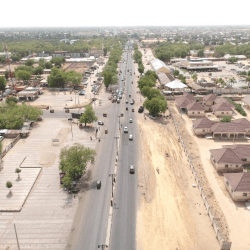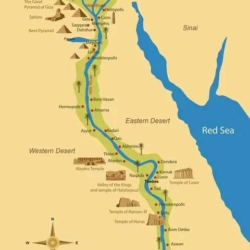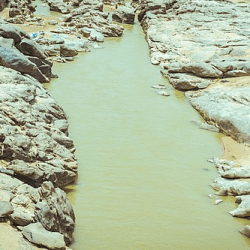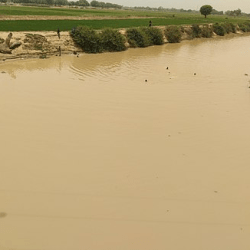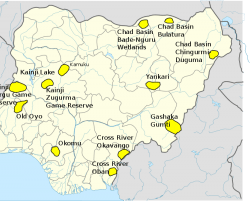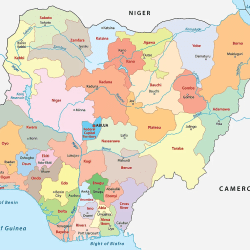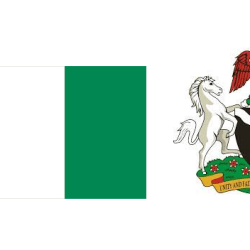The Yobe River: Lifeline of West Africa’s Sahel Region
The Yobe River, also known as the Komadougou Yobe (French: Komadougou Yobé), is one of the key water systems in West Africa, flowing into the famous Lake Chad through the countries of Nigeria and Niger. Located in the Sudan-Sahel zone of northeastern Nigeria, the river provides water to vast regions of the Sahel, a region often threatened by droughts and desertification. Covering a drainage basin of about 148,000 km², the Yobe River holds immense ecological, economic, and social significance for the millions of people who rely on its waters for agriculture, fishing, and livelihoods.
Historical Importance of the Yobe River
The Yobe River has long been a crucial resource in the region, dating back to the era of ancient trade routes and settlements. The river facilitated early human activity in the area, and the fertile lands surrounding it made it an attractive location for farming and the growth of local economies. Its presence enabled the development of local civilizations, providing a lifeline in the otherwise arid Sahelian environment.
Geographic Location and Extent
The Yobe River flows through parts of Nigeria and Niger, two West African countries with significant portions in the Sudan-Sahel zone. It runs approximately 250 km north of Damaturu, the capital of Yobe State, and merges with the Nguru-Gashua wetland area before reaching Lake Chad. The river’s course connects several critical regions, influencing the ecology and economy of its surrounding areas.
The Yobe River’s Tributaries
Three major rivers feed into the Yobe: the Hadejia River, Jamalare River, and the Komadugu Gana River. These tributaries help sustain the river’s flow, especially during the rainy season. Each tributary plays a distinct role in supplying water to different regions, contributing to the overall health and productivity of the river basin.
- Hadejia River: Originating in the Jos Plateau, this river is one of the most significant tributaries, impacting agriculture and wetlands.
- Jamalare River: A smaller but vital stream, it adds to the seasonal water levels.
- Komadugu Gana River: Another important feeder, affecting local fisheries and farming activities.
The Sudan-Sahel Zone
The Sudan-Sahel zone is characterized by a semi-arid climate with a short rainy season followed by long dry periods. This region is highly dependent on seasonal water bodies like the Yobe River for both agriculture and daily life. The area’s fluctuating climate and its proximity to the expanding Sahara Desert make the river’s water crucial for survival and economic activities in this vulnerable ecosystem.
The Nguru-Gashua Wetland System
A key feature of the Yobe River basin is the Nguru-Gashua wetland system, a vast and complex ecological zone that provides critical support for biodiversity, local agriculture, and fishing industries. These wetlands play a vital role in sustaining the livelihoods of local populations, serving as a habitat for many species of fish, birds, and other wildlife.
The wetland system also contributes to agriculture by supplying water for irrigation in an otherwise arid landscape. The Nguru-Gashua wetlands, fed by the Yobe River, are one of the most important wetland ecosystems in West Africa.
Yobe River in Nigeria: Local Impact
In Nigeria, the Yobe River runs through the Yobe State, where it provides water for farming, fishing, and domestic use. Bade Local Government, one of the regions along the river, is a beneficiary of the river’s resources. Cities like Gashua and Nguru are deeply connected to the river’s economic and ecological functions, particularly due to the proximity to the wetland system.
The region’s dependence on the river is especially critical during dry periods, where it becomes a key water source for the cultivation of crops such as millet, sorghum, and rice.
Yobe River in Niger
In Niger, the Yobe River continues to play a role in local agriculture and fishing, though the pressures on the water supply are even greater due to the country’s more arid conditions. The river provides much-needed irrigation water for crops and supports the nomadic pastoralist communities that graze livestock in the region.
Ecological Significance of the Yobe River
The river supports a wide variety of flora and fauna, making it a key ecological zone in West Africa. Its waters provide a habitat for numerous species of fish, amphibians, and birds, including several migratory species that depend on the river’s wetlands. The river also supports unique plant life adapted to the semi-arid conditions, including grasses and trees essential for the local environment.
Economic Role of the Yobe River
The Yobe River plays a critical role in the economy of the Sahel, particularly in agriculture and fishing. Farmers rely on the river’s seasonal flooding to irrigate their crops, while fishermen depend on its waters for their livelihoods. The river is also used for livestock watering, particularly by nomadic pastoralists who move through the region.
Agriculture, especially rice and vegetable farming, is one of the main economic activities along the river, supported by irrigation from its tributaries.
Water Management Challenges
Despite its importance, the Yobe River faces several challenges, including water over-extraction, pollution, and climate change. The increasing demand for water for agriculture and domestic use has led to conflicts among communities and competition for resources. In addition, climate change is altering rainfall patterns, making water availability less predictable and threatening the long-term sustainability of the river.
Conservation Efforts and Environmental Policies
Efforts to conserve the Yobe River and its wetlands are ongoing. Governments of Nigeria and Niger, along with international bodies, have been working on water management plans and conservation strategies to ensure that the river continues to support the region’s ecological and economic needs. International organizations such as the Lake Chad Basin Commission have been active in promoting sustainable water use in the region.
The Role of the Yobe River in the Lake Chad Basin
The Yobe River is a crucial contributor to the Lake Chad Basin, one of the most significant water systems in Africa. However, with the shrinking of Lake Chad due to climate change and water mismanagement, the Yobe’s role has become even more critical. The diminishing flow of the river into the lake has raised concerns about the long-term viability of this water system and its ability to support the millions of people who depend on it.
Future of the Yobe River
Looking ahead, the Yobe River’s future is closely tied to broader environmental changes in the Sahel. Climate projections suggest that the region will experience more extreme weather patterns, including longer droughts and more intense rainy seasons. This will place even greater pressure on the river’s water resources and require concerted efforts in conservation and sustainable management to ensure its survival.



Frequently Asked Questions (FAQs)
- Where is the Yobe River located?
- The Yobe River is located in West Africa, primarily flowing through Nigeria and Niger before emptying into Lake Chad.
- What are the main tributaries of the Yobe River?
- The main tributaries include the Hadejia River, Jamalare River, and Komadugu Gana River.
- Why is the Yobe River important?
- The river is crucial for agriculture, fishing, and providing water to communities in the Sudan-Sahel zone.
- How does climate change affect the Yobe River?
- Climate change leads to unpredictable rainfall patterns, increased droughts, and greater pressure on water resources, threatening the river’s sustainability.
- What is the ecological role of the Yobe River?
- It supports biodiversity, particularly in the Nguru-Gashua wetlands, providing habitat for numerous species of fish, birds, and plants.
- What are the main threats to the Yobe River?
- The river faces challenges from over-extraction, pollution, and climate change.
